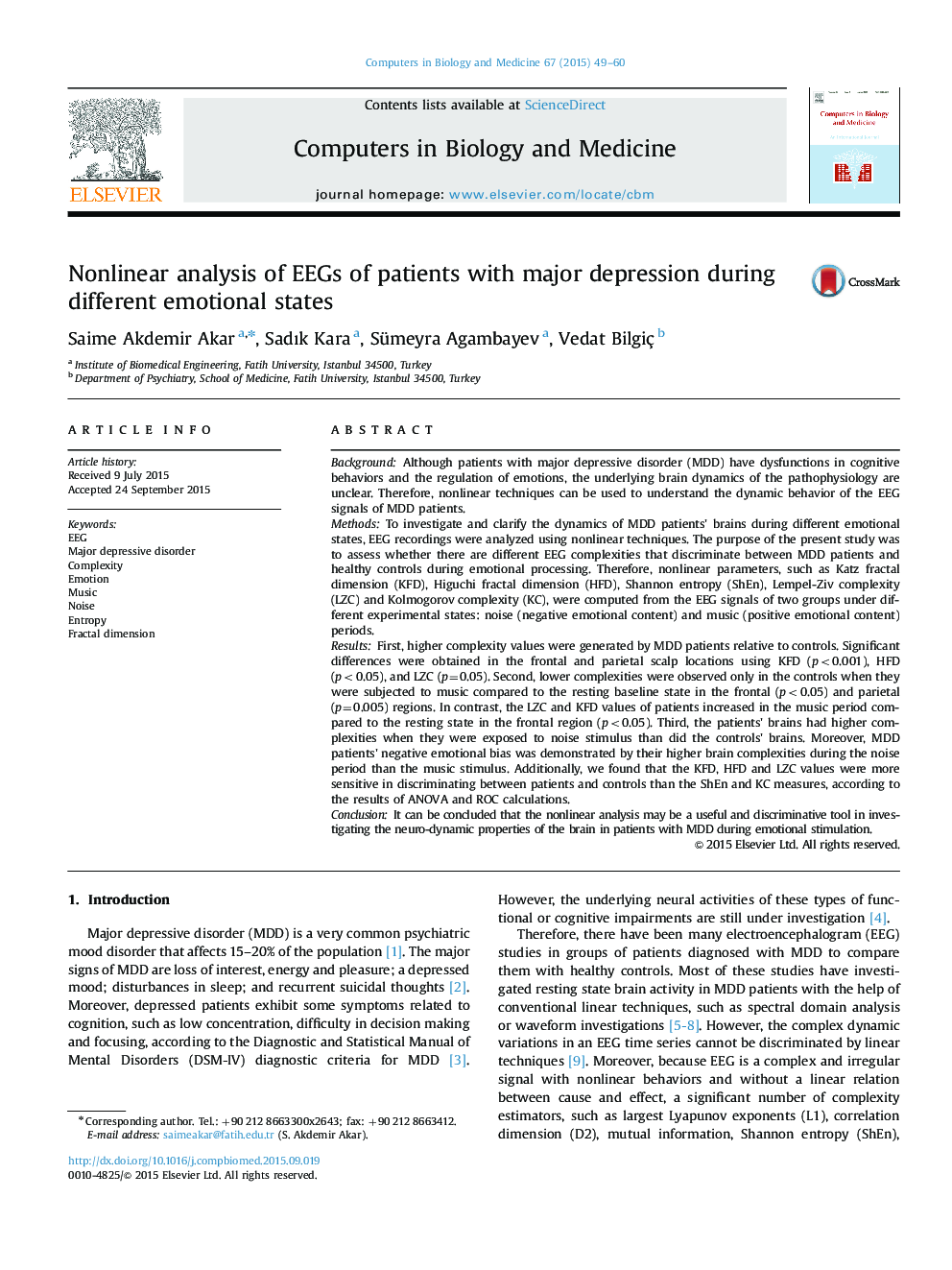| Article ID | Journal | Published Year | Pages | File Type |
|---|---|---|---|---|
| 504847 | Computers in Biology and Medicine | 2015 | 12 Pages |
•This is the first work defining emotional changes in complexity in MDDs’ brains.•Higher complexity values were generated by MDD patients relative to controls•The patients had higher complexities during noise than did the controls’ brains.•Patients’ negative emotional bias was showed by their higher brain complexities.
BackgroundAlthough patients with major depressive disorder (MDD) have dysfunctions in cognitive behaviors and the regulation of emotions, the underlying brain dynamics of the pathophysiology are unclear. Therefore, nonlinear techniques can be used to understand the dynamic behavior of the EEG signals of MDD patients.MethodsTo investigate and clarify the dynamics of MDD patients׳ brains during different emotional states, EEG recordings were analyzed using nonlinear techniques. The purpose of the present study was to assess whether there are different EEG complexities that discriminate between MDD patients and healthy controls during emotional processing. Therefore, nonlinear parameters, such as Katz fractal dimension (KFD), Higuchi fractal dimension (HFD), Shannon entropy (ShEn), Lempel-Ziv complexity (LZC) and Kolmogorov complexity (KC), were computed from the EEG signals of two groups under different experimental states: noise (negative emotional content) and music (positive emotional content) periods.ResultsFirst, higher complexity values were generated by MDD patients relative to controls. Significant differences were obtained in the frontal and parietal scalp locations using KFD (p<0.001), HFD (p<0.05), and LZC (p=0.05). Second, lower complexities were observed only in the controls when they were subjected to music compared to the resting baseline state in the frontal (p<0.05) and parietal (p=0.005) regions. In contrast, the LZC and KFD values of patients increased in the music period compared to the resting state in the frontal region (p<0.05). Third, the patients׳ brains had higher complexities when they were exposed to noise stimulus than did the controls׳ brains. Moreover, MDD patients׳ negative emotional bias was demonstrated by their higher brain complexities during the noise period than the music stimulus. Additionally, we found that the KFD, HFD and LZC values were more sensitive in discriminating between patients and controls than the ShEn and KC measures, according to the results of ANOVA and ROC calculations.ConclusionIt can be concluded that the nonlinear analysis may be a useful and discriminative tool in investigating the neuro-dynamic properties of the brain in patients with MDD during emotional stimulation.
